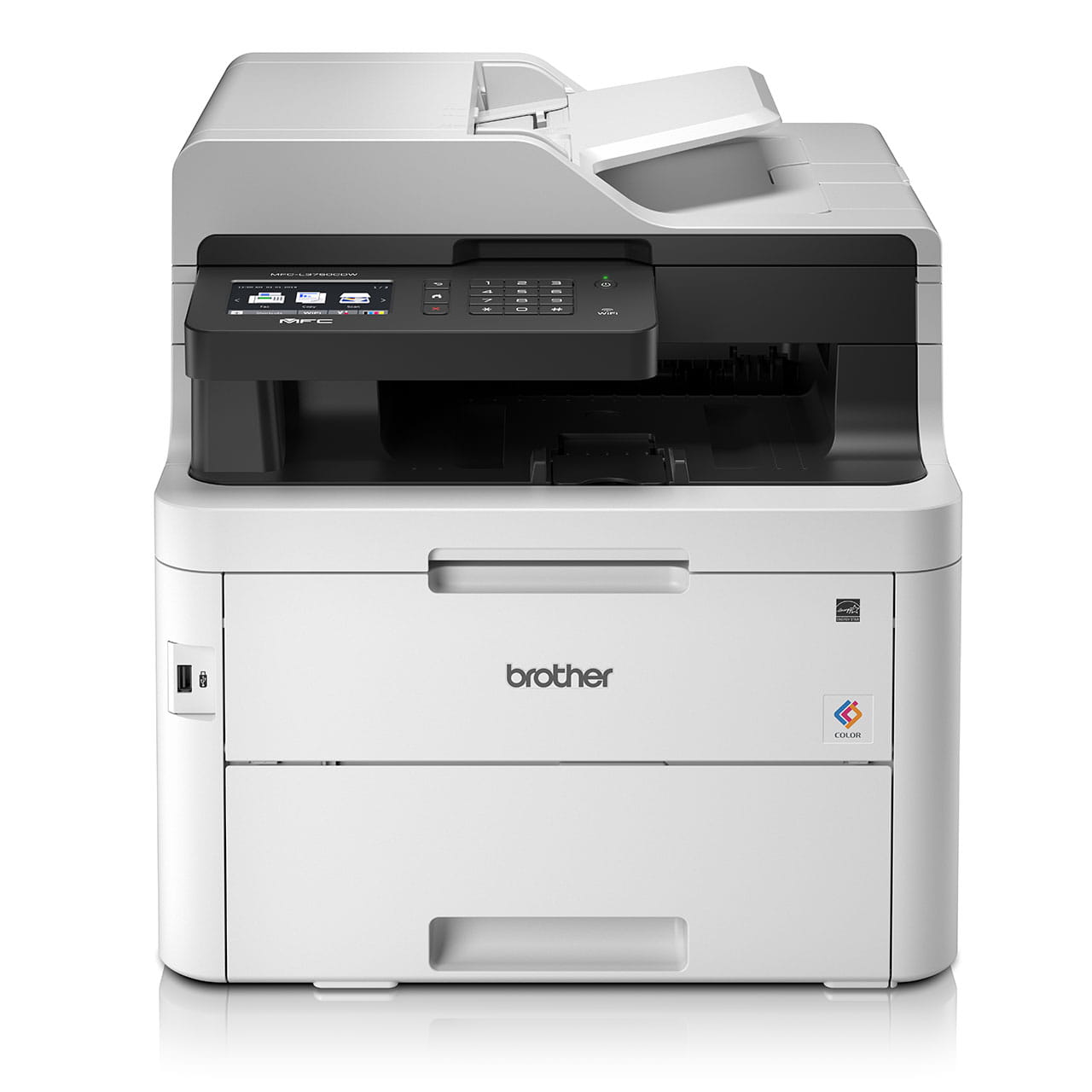
The Brother MFC-L3745CDW is a 22ppm colour printer that is part of its new 2019 range of LED colour lasers.
The Brother MFC-L3745CDW is an entry-level laser suitable for SOHO (small office, home office) use and offers laser print quality for an exceptionally low entry price.
Why a LED laser?
LED lasers are different from standard lasers. With LED the image is projected on the rotating drum using thousands of fixed LED lights. With the latter light is shone on the drum by a laser shining through a rotating polygon mirror and focusing lenses. LED lasers are usually more robust, smaller, lighter and have a straight paper path. They produce less heat, so they are good for home and office use.
All lasers use at least four drums – Black, cyan, magenta and yellow. Some, like OKI, add a white toner as well for signage use.
Review: Brother MFC-L3745CDW
Its A4 colour LED engine is part of the 2019 range of standard and MFC printers (note MFC means print, ADF scan, copy and fax)
- HL-L3230CDW 24ppm printer at $329
- DCP-L3510CDW 18ppm printer at $399 (flatbed scanner – no fax)
- MFC-L3745CDW 22ppm at $499 (Printer Supermarket $373.98)
- MFC-L3750CDW 24ppm at $529 (Officeworks exclusive on special at $395)
- MFC-L3770CDW 24ppm at $579 (Duplex scan, NFC) Printer Supermarket $460.88
Why buy a laser?
Brother believes you need a choice, so it offers inkjet, ink tank, and laser printers. The short answer is:
Inkjet is best for photo printing on specialty papers. Given time and the right ink it can produce excellent results. Most homes have one because they are cheap to buy, but when print volumes ramp up, they can be very expensive to run costing 50 cents a page – or more.
Ink tanks (called InkVestment) usually cost around 10-20 cents a page. Here you use replaceable ink bottles to fill ink tanks, and these have a very long life print head.
Practically, this LED laser is a home or SOHO printer that churns out 22ppm, laser-quality (colour or mono) on poor quality, cheap bond paper. It does this via fusing towner powder to the paper.
Consumable costs
This laser can cost as low as five cents a page – based on 50,000 ISO pages. Of course, in real life, we don’t print ISO test pages and tend to use mono the most which keeps page costs down.
But using my rough calculations over 50,000 typical pages (mixed text and photos), I suspect this is going to be closer to an average of 15-20 cents a page. Still, for an entry-level laser, this is excellent, and I warn you to be very wary of any brand of entry-level laser quoting lesser running costs.
This simply means it is vital to match your print volumes to the right printer. For higher volumes you need a very much lower page cost, higher duty cycle printer.
Conversely, the typical home user is flat out doing 80-100 pages-a-month (2 reams of bond a year), so this printer would last 50 years before getting a return on investment!
That is because the delivery belt and waste toner tank last 50K prints, four drums for 18K prints and then you have a choice of high yield 2300-page toners (best value) or standard 1300-page toners.
So, this really comes into its own when you print around 1000 pages a month, and you plan to have it for about five years. Remember lasers usually have consistent quality from the first to the last page as you replace components as necessary. For example, replacing the four drums after 18K prints (around $1000) almost gives you a new printer again. Although you would probably replace the entire $499 printer before buying replacement drums.
Still, you have to understand that a $499 printer may cost you several thousand dollars over its life!
Build
I have always been impressed by Brother build quality. Over many years I have probably owned ten or more inkjets – mainly A3 models for business use.
While plastic (ABS) is the main material this has a metal internal chassis and reinforcement where needed – there is every reason to expect this will meet its monthly duty cycle.
Read the original review by Ray Shaw on the Gadget Guy website here.

